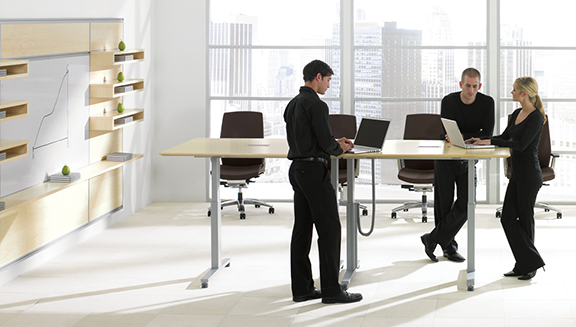
Trends in the Workplace
Office environments have rapidly evolved during the last decade to accommodate to its diverse workers. Today’s workplace has three main generations working together: Baby Boomers, Gen X, and Gen Y (Millennials). This means businesses have to create an office environment that is attractive and functional for all three generations.
Collaborative Spaces
Due to Gen Y’s social and collaborative nature, alternative places that allow them to complete projects and work with other employees are essential to their nature. A private workspace isn’t the most supportive area for a team to collaborate and work together. A huddle room is a great place that provides a space for employees to collectively work together in an environment that supports their tasks and the technology they use to complete them.
Alternative Workspaces
Recent studies have shown that prolonged sitting has a negative effect on the human body. Stagnate sitting can increase your risk of diabetes, cancer, and heart attack. As an employer, a good way to avoid increasing these risks among your staff is to provide alternative places for your employees to work that allows them to move around. Two great examples of this is height adjustable desks and strategically placing standing-height surfaces to encourage spontaneous meetings and tasks to be completed in standing position.
Ergonomic Solutions
Baby Boomers traditionally favor completing tasks or problems on their own as an alternative to collaboration. This means they will most likely be completing most of their work seated at their desk. Giving them ergonomic solutions to work comfortably is an important way to invest in their future. Ergonomic solutions such as adjustable monitor arms, integrated keyboard supports, and task chairs are things that are most commonly found today’s workplace. Employees will be able to comfortably complete tasks followed by lower stress levels and heightened productivity.
Dual Workstations & Expansion Desking
More companies are straying away from private offices and creating open floor plans to adjust to rising real estate costs. Dual workstations allow employees to work closer together in an atmosphere that supports spontaneous collaboration. By incorporating dual workstations within the office, companies are eliminating barriers to communication while saving money.





